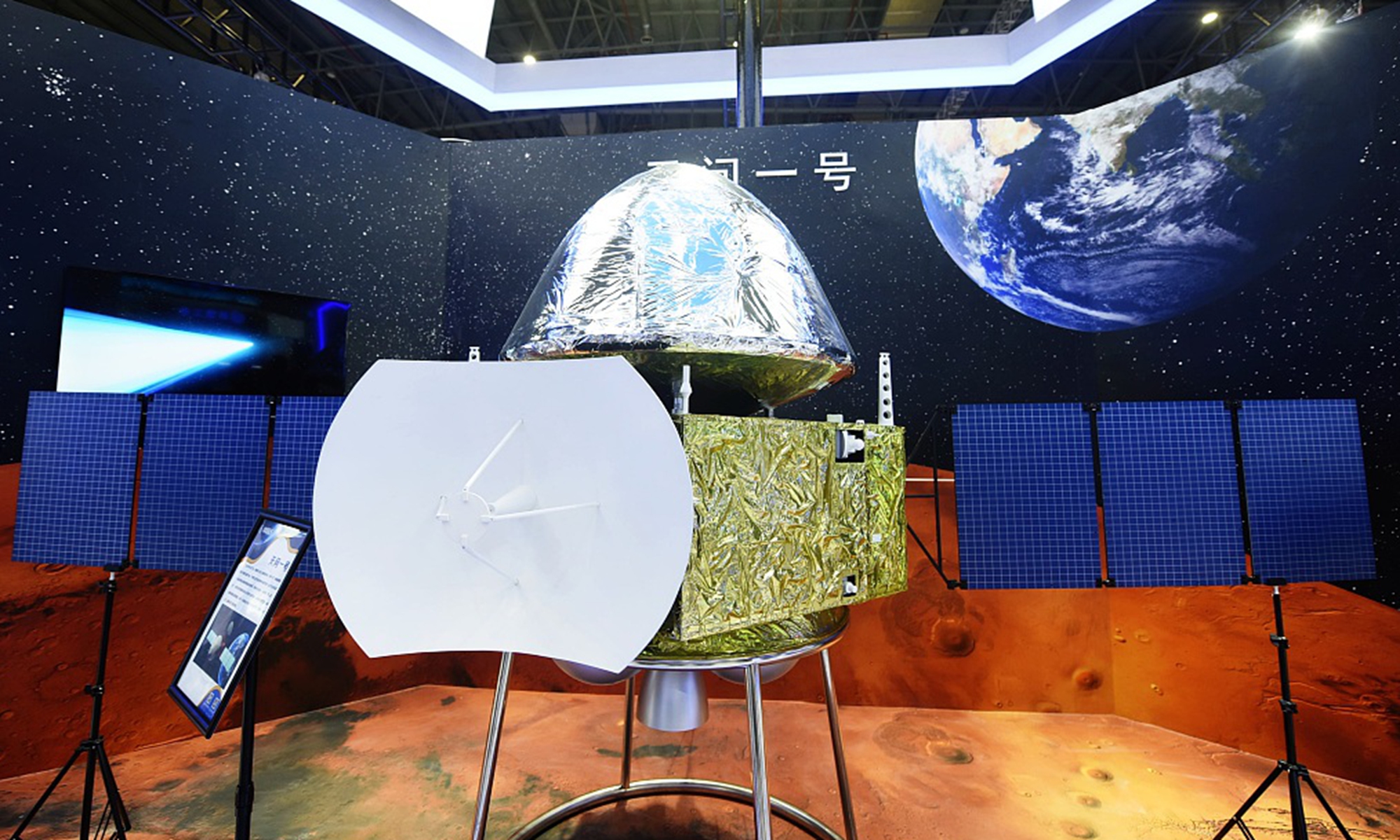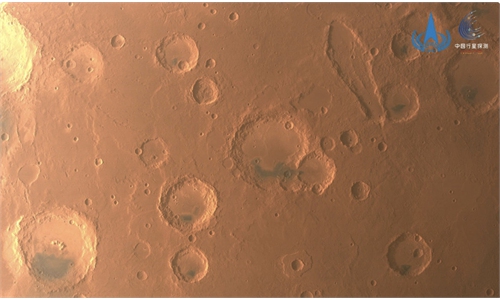Tianwen-1 mission marks second full year in Mars’ orbit, with more notable finds expected

Tianwen Mars Rover Photo:VCG
Friday marks the second anniversary since China's independent Tianwen-1 orbiter and rover entered Mars orbit, kicking off an amazing treasure-hunt journey focused on the Red Planet. Over the past two years, Tianwen-1 has obtained first-hand detection data and achieved notable scientific research results, which analysts believed would be continued with further multi-dimensional exploration missions carrying out.
After a journey of 470 million kilometers, Tianwen-1 probe entered orbit around Mars on February 10, 2021, becoming China's first satellite to achieve this feat.
According to the China National Space Administration (CNSA), the Tianwen-1 mission will explore the surface and geology of the Mars as well as its soil composition and magnetic field.
Three months after it entered Mars orbit, on May 15, 2021, Tianwen-1 probe touched down at its pre-selected landing area in Utopia Planitia, a vast Martian plain, marking the first time that China has landed a probe on the planet. A week later on May 22, 2021, the Mars rover Zhurong, which resembles a butterfly, drove down from its landing platform to the Martian surface. On June 11, the China National Space Administration released the first photographs taken by Zhurong.
Before landing on Mars, the orbiter acquired panchromatic images of the pre-selected landing area with a resolution of exceeding 1m, wide-area color medium resolution images, and multispectral information. After landing on Mars, the Mars Orbiter conducted imaging exploration of the landing area and the rover's patrol area to obtain high-resolution images.
On June 29, 2022, the CNSA announced that the Mars Orbiter has acquired medium resolution image data covering the entire Martian globe, acquiring a large amount of first-hand scientific data and accumulating valuable experience for China's planetary exploration project.
Engineering data based on the orbiter platform has also yielded significant results.
In September to October 2021, Tianwen-1 paused for a while as the sun blocked communications with Earth. However, Tianwen-1 has still obtained research results on the velocity of coronal plasma ejections, the detailed structure of coronal waves, and the nascent high-speed solar wind flow during this period.
In November 2021 Mars orbiter carried seven science payloads to conduct global remote sensing scientific exploration of Mars.
According to a white paper titled "China's Space Program: A 2021 Perspective," the country will continue its lunar exploration with the future Chang'e-6, Chang'e-7 and Chang'e-8 missions. It will complete the construction of an international lunar research station together with other countries, global organizations and partners.
Future plans also include launching an asteroid probe, retrieving samples from near-Earth asteroids, and retrieving samples from Mars, according to Xinhua News Agency.

